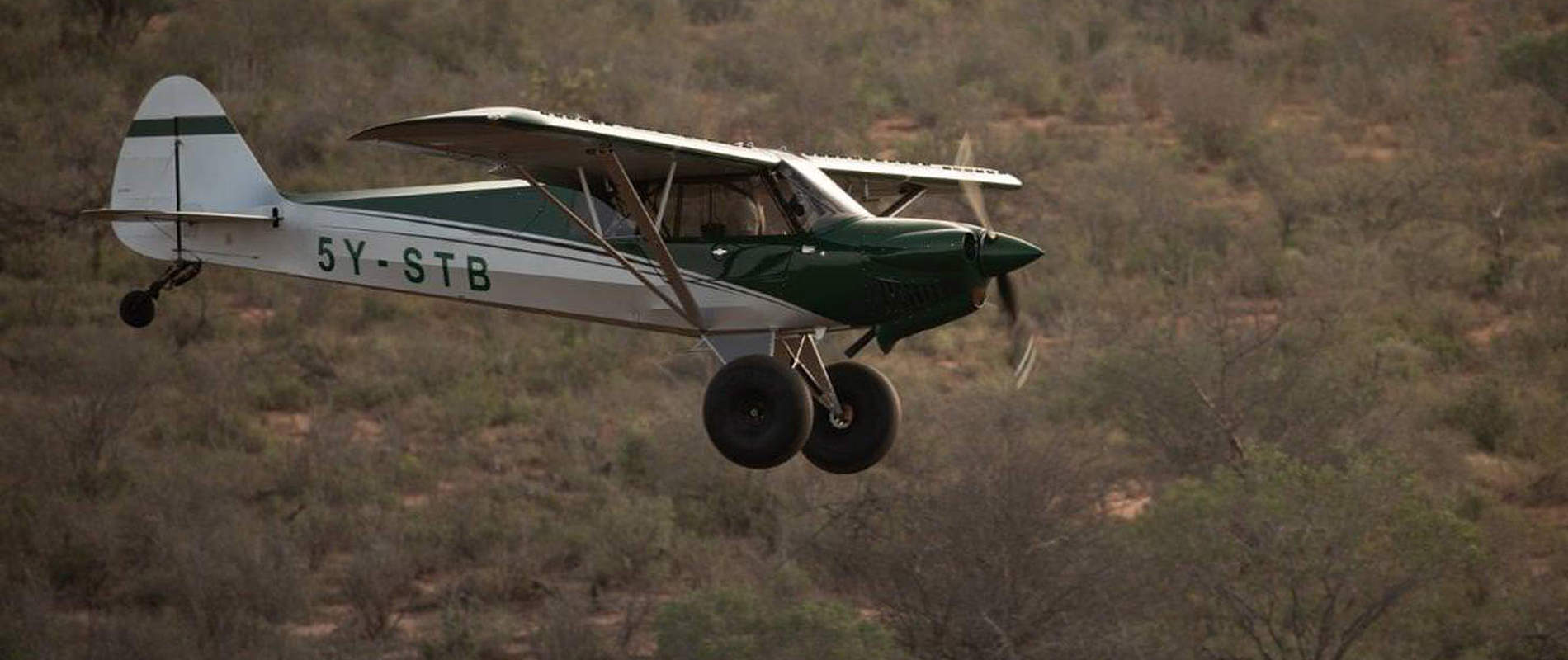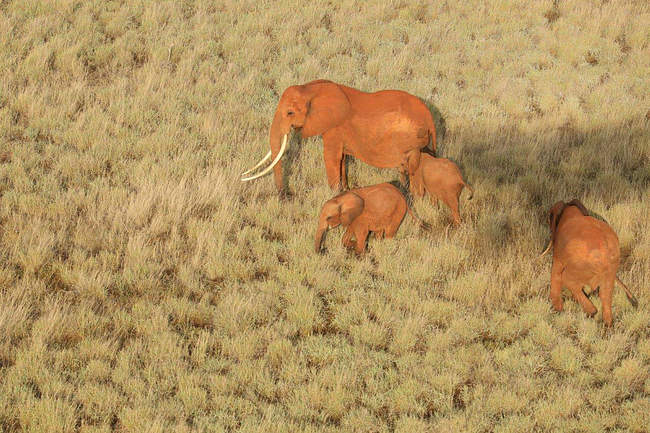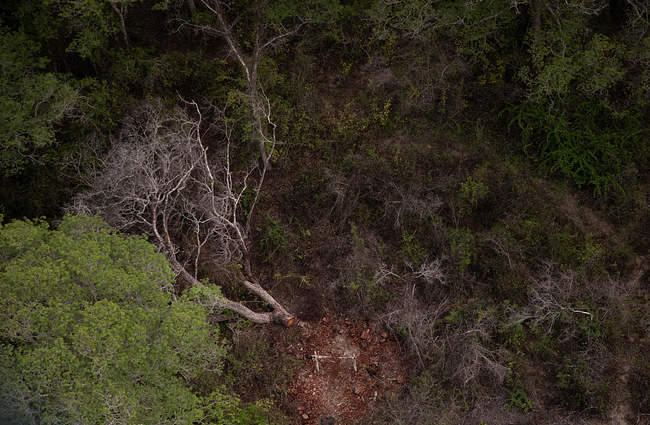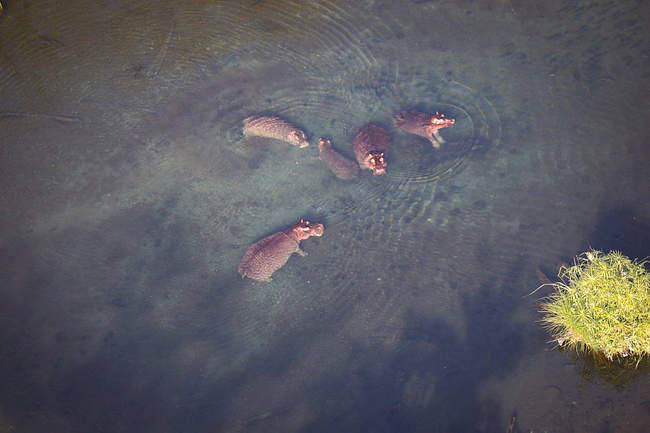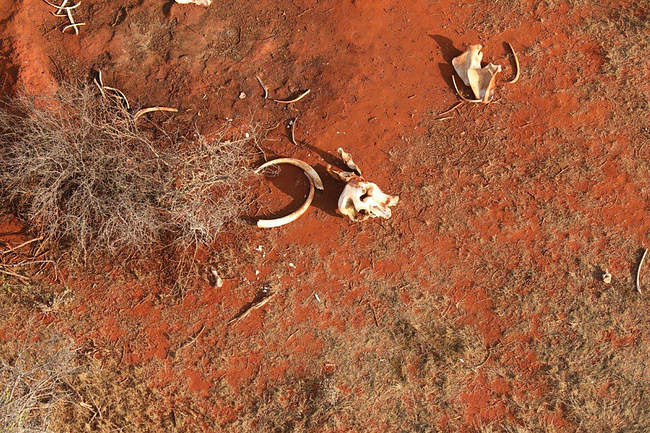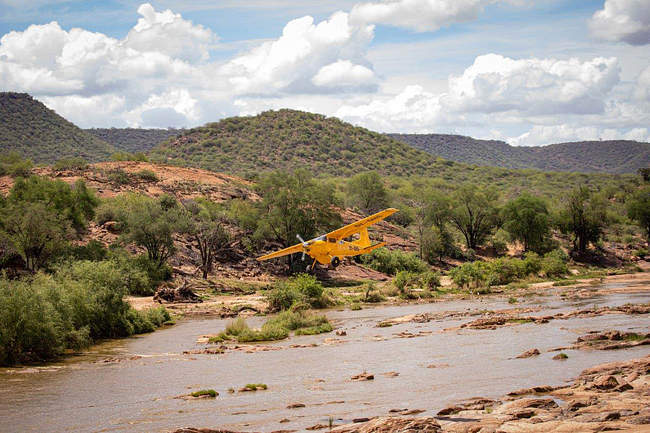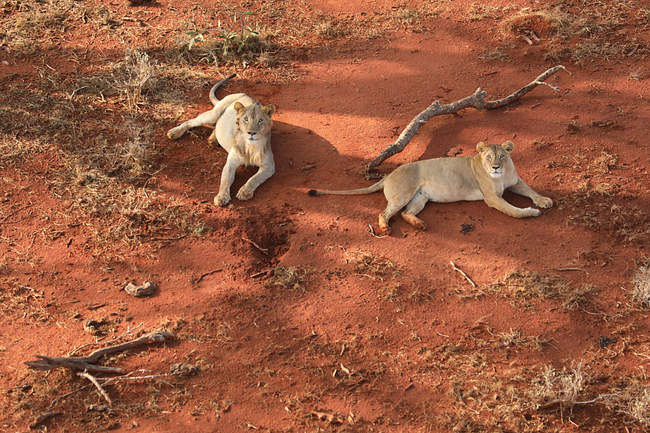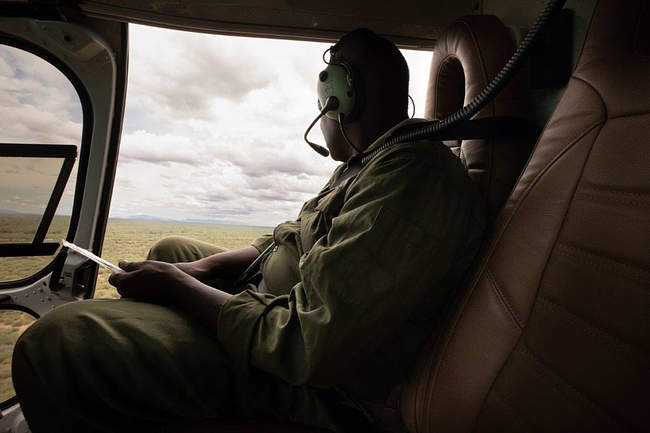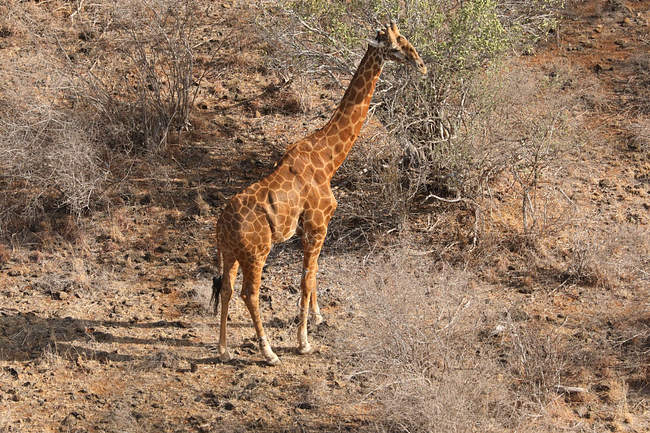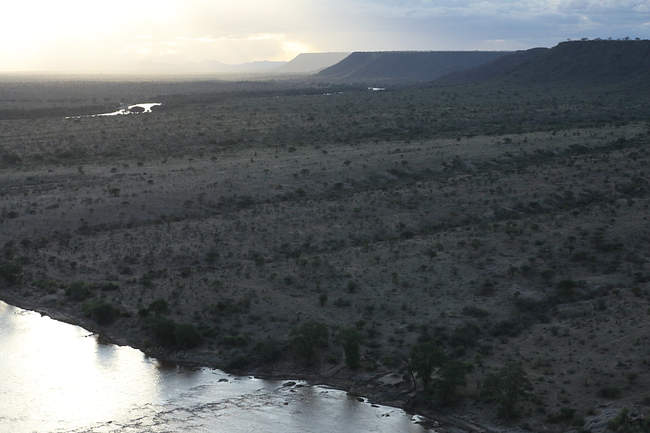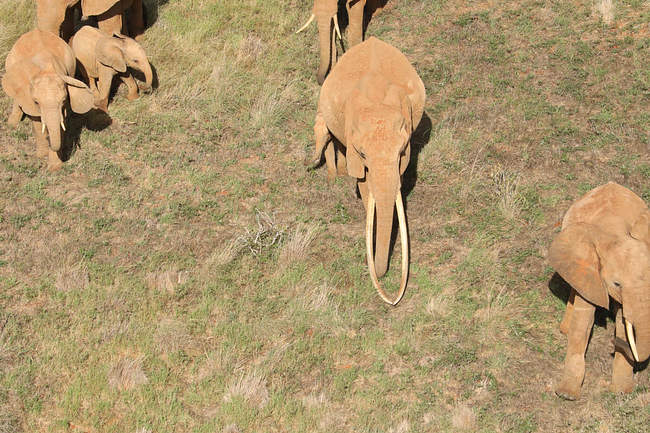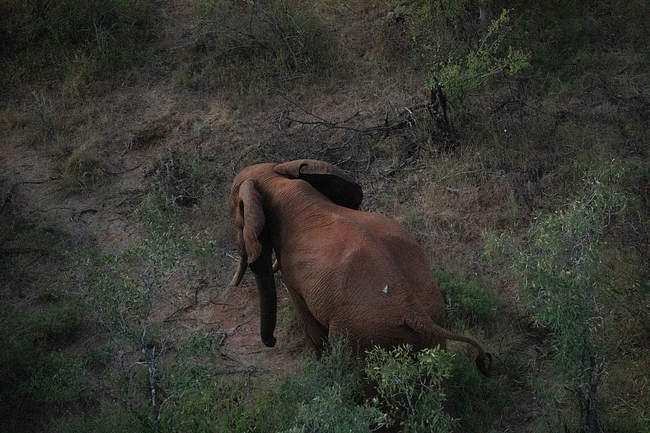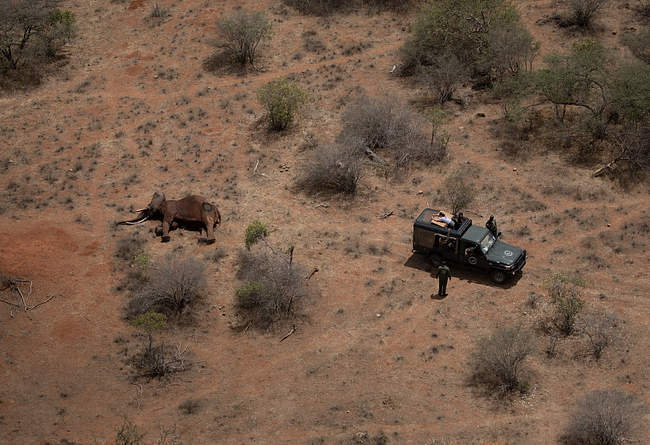There was a notable increase this month in illegal activities within the National Parks in the Tsavo Conservation Area, including logging activity. In most cases, only a small number of trees had been felled, however, on one patrol our helicopter pilot discovered two areas with large-scale wood carving.
A wood carver with over 200 pieces of carved wood, mostly olive, which was ready for transport was found at one of the sites. Other successful interceptions led by the aerial team included the confiscation of 4 wooden beams from a logging site in the north of Tsavo, as well as the confiscation of drying buffalo meat in a logging camp further south. The latter incident highlights the reality that small-scale logging, whilst seemingly innocuous, is frequently carried out in conjunction with other illegal activities, most notably bushmeat poaching.
Charcoal burning continues to be largely controlled in our area of operations, with only 2 charcoal kilns sighted throughout the month in the Chyulu Hills National Park. In contrast, Galana Ranch, which abuts the eastern boundary of Tsavo East National Park, is experiencing increasing amounts of charcoal burning. On one flight our pilot observed 167 working kilns, 342 kilns in preparation, and literally thousands of charcoal sacks ready for collection.
Illegal livestock incursions continued throughout the month and our fixed-wing aircraft conducted frequent patrols to survey and locate livestock within the National Parks for removal by KWS. No signs of elephant poaching were detected during April, although 2 elephant carcasses were spotted. These were both old carcasses and in both cases the ivory was still intact suggesting that they died of natural causes. Signs of bushmeat poaching were, however, evident. As earlier mentioned, one logging camp was discovered with the remains of a poached buffalo. Additionally, on one of our helicopter patrols, two suspects fled from a camp, leaving behind evidence of bushmeat poaching. Other indications of bushmeat poaching included signs of heavy motorbike traffic outside Tsavo East, on Galana Ranch, as well as human tracks found during a helicopter patrol. Two shooting blinds were found on another patrol, which likely would have been used by ivory poachers, yet these were old.
A number of veterinary cases were attended to during April. The first case was of a young elephant calf spotted with a cable snare on its leg in the Shimba Hills. The team were able to remove the snare and treat the wound, before reuniting the calf with his mother. In Tsavo East a bull elephant was sighted on a fixed-wing patrol with a deep penetrating wound on its rump. With the alarm raised, the SWT/KWS Tsavo Vet Unit attended to treat the elephant. The final veterinary case attended by the aerial unit in April unfortunately ended tragically. A well-known, big tusker, known as Tolstoy, was found collapsed in Kimana Sanctuary, having succumbed to a spear wound that was treated some weeks earlier. Unfortunately, the wound had become infected and, despite a herculean rescue effort, Tolstoy was just too weak to stand and he died that evening, on 27th April 2022. A deeply saddening day for all involved, as Africa lost one of its giants. Read more in our Farewell to Tolstoy.

One orphan elephant rescue was conducted in April with the assistance of the helicopter, which was called to Mukugodo Forest in the north of the country to airlift a small, 2-month-old elephant calf that had fallen off a large rock while the herd was trying to access a water point on a steep-sided lugga. Sadly the calf was discovered to have an inoperable shattered front leg and catastrophic internal injuries.
There was must more positive news in Tsavo, with an aerial sighting of 14 of Tsavo East's black rhino population. Just a few years ago there were only 9 rhino left in Tsavo East National Park, but thanks to the concerted efforts of field partners providing enhanced security and monitoring, and governments and NGOs working to reduce demand for rhino horn, the free release population in Tsavo East has grown to an impressive 23 individuals.

